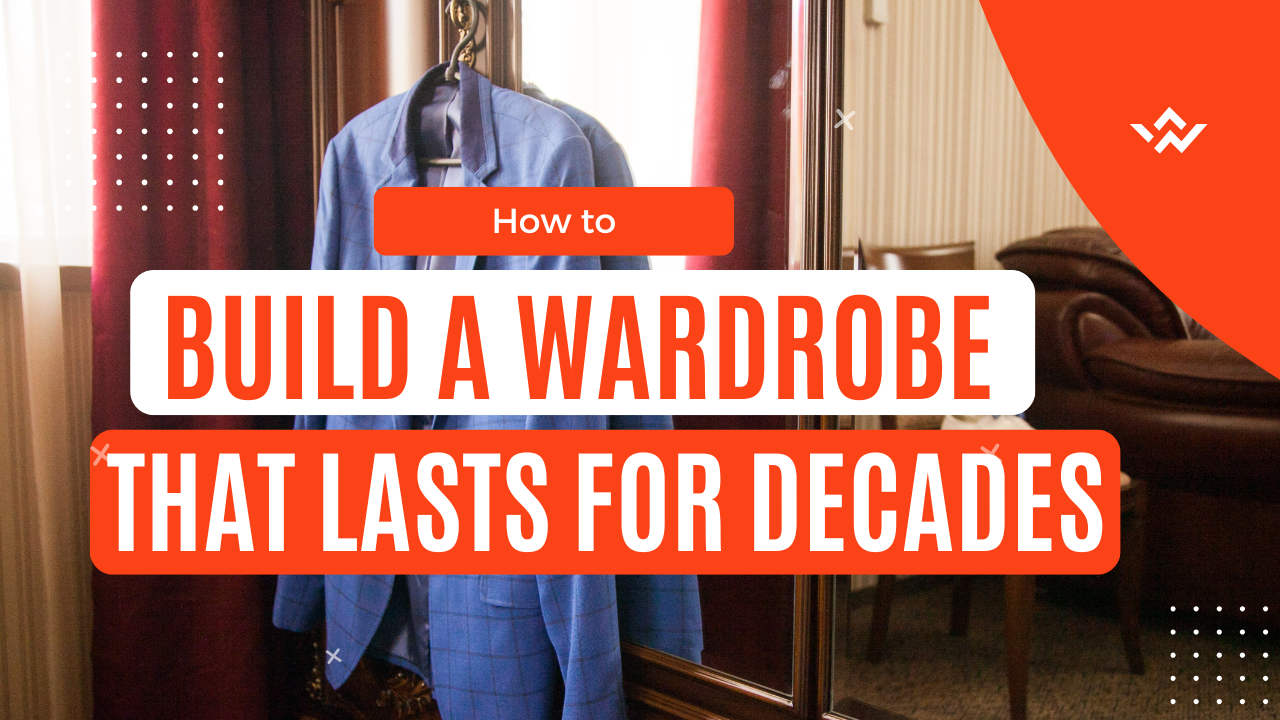Introduction
A time-tested wardrobe isn’t just about owning clothes. It’s also about cultivating a sustainable, stylish, and durable collection that reflects who you are while being kind to the planet. In an era where fast fashion dominates Trends change quickly each season. Build a wardrobe that lasts, reduce waste, save money, and… have meaning with clothes. It is also a powerful step in building relationships.
This complete guide covers the challenges of buying a timeless wardrobe. Practical steps for creating a wardrobe and insights into care for decades…
The Problems with Modern Wardrobes
- Fast Fashion and Planned Obsolescence
- The rise of fast fashion has made clothing less expensive but less durable. Fast fashion brands often prioritize trends over quality. As a result, clothing quickly loses its shape, color, or functionality.
- The psychological phenomenon of planned obsolescence ensures that even functional clothing is discarded in favor of new trends. This consumerism results in more than one billion tons of clothing ending up in U.S. landfills each year.
- Environmental Impact
- The fashion industry is the second largest polluter in the world. They produce 500 million tons of microplastics and use enormous amounts of resources during production…
- Because cotton is a fabric that uses a lot of water. Therefore, it takes approximately 2,700 liters of water to produce 1 shirt.
- Personal Frustrations
- Many consumers find the products in their closets cluttered. Lack of variety or break after a few washes
- Impulse purchases during sales often result in clothing not being worn or not matching one’s personal style.
Why Build a Wardrobe That Lasts 2025?
A long-lasting wardrobe has many benefits:
- Sustainability: Buying less reduces waste and conserves natural resources.
- Save money: Higher quality parts may cost more but save money by eliminating the need to replace parts over time.
- Personal success: A carefully curated wardrobe reflects who you are. Increase confidence and promote an emotional connection with your clothes.
Steps to Building a Durable Wardrobe
1. Start with a Plan
- Organize: Evaluate your current closet and organize items you love and wear often. to match your style Donate or recycle the rest.
- Define your style: Determine the clothing that suits your lifestyle and personality. Classic aesthetics such as minimalist or vintage. They often remain relevant throughout the decades.
2. Prioritize Quality
- Look for clothing made from high-quality materials such as organic cotton, wool, linen, and silk. These fabrics are durable.
- Good ventilation and timeless Check for construction details like reinforced seams, lining, and sturdy zippers. Investing in well-made clothing will ensure its longevity.
3. Build a Capsule Wardrobe
The capsule wardrobe focuses on a core collection of multi-purpose clothing. which can be mixed and matched to create many types of outfits The important thing is:
- Tailor-made blazer
- Jeans with a great fit.
- neutral sweater
- The classic trench coat.
- Leather shoes and boots
4. Buy Timeless Pieces
- Timeless fashion avoids trend fluctuations. Choose neutral colors, simple silhouettes, and classic patterns like stripes or checks.
- An example of lasting style is a white button-up shirt. little black dress and leather jacket
5. Shop Responsibly
- Supporting ethical brands: Look for brands that emphasize fair labor practices. sustainable materials and environmentally friendly production processes. Examples include Patagonia, Allyn Fisher, and Linenfox.
- Thrift and Vintage Stores: Shopping secondhand reduces the need for new clothing and adds unique, high-quality items to your wardrobe.
Maintaining a Long-Lasting Wardrobe
Practice proper care
- Follow the instructions on the label. Using a gentle detergent and washing cycle. Avoid washing too much. Because it may cause the cloth to wear out.
- Air dry instead of using a dryer. This weakens the fibers and can cause shrinkage.
Repair, don’t change.
- Learn basic sewing techniques to prevent minor damages like missing buttons or small tears.
- for major repairs Please consult a professional tailor who can restore the garment to its original condition.
Keep your clothes neat and tidy.
- Use padded hangers for delicate clothing and store knitwear flat to avoid stretching.
- Store clothing in a cool, dry place. Keep out of direct sunlight to prevent fading and fraying.
Addressing Common Psychological Barriers
- Resist impulse buying
- Avoid buying things just because they’re on sale. Focus on whether the piece matches your style and wardrobe needs.
- Cultivating Emotional Sustainability
- Choose items that reflect your values and who you are and add personal meaning to your outfit. For example, a leather jacket or a vintage dress can be a signature piece with sentimental value.
- Change your mind
- Embrace the idea that fashion doesn’t have to happen instantly. Enjoy the longevity of your wardrobe and the stories behind it.
The Role of Sustainability in Fashion
- Helps reduce waste
- with sustainability You play your part in reducing the environmental burden of waste and textile production.
- Demand for change
- Supporting sustainable and ethical brands encourages the fashion industry to prioritize quality over quantity.
- Teaching others
- Sharing your journey to a long-term closet inspires others to make conscious choices.
Conclusion
Creating a wardrobe that will last for decades is a journey of intention, durability, and style that includes prioritizing quality over quantity. Accepting timeless fashion and taking care of your clothes with care When you curate a sustainable collection You will not only save money and reduce waste. But it also creates a meaningful relationship with your clothes.
This thoughtful approach transforms your wardrobe into more than just a selection of clothes. It also reflects your values, uniqueness and commitment to a sustainable future…


